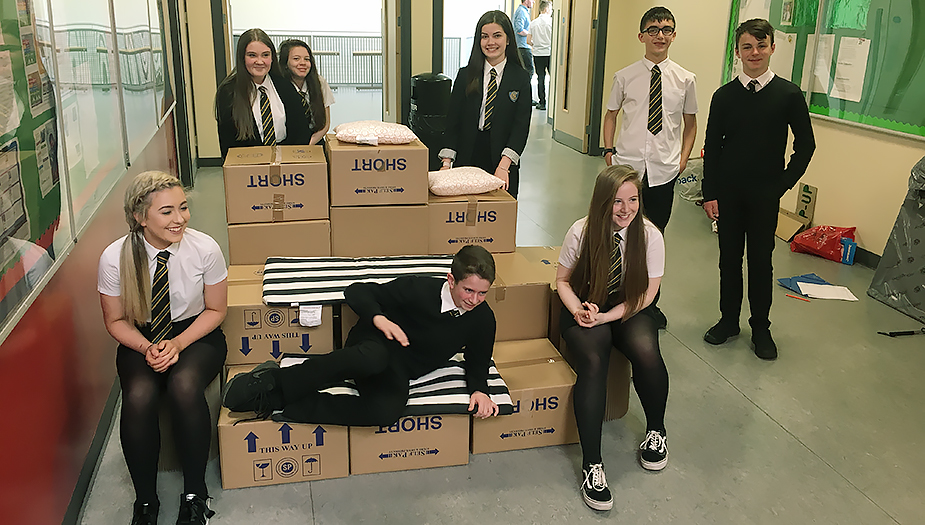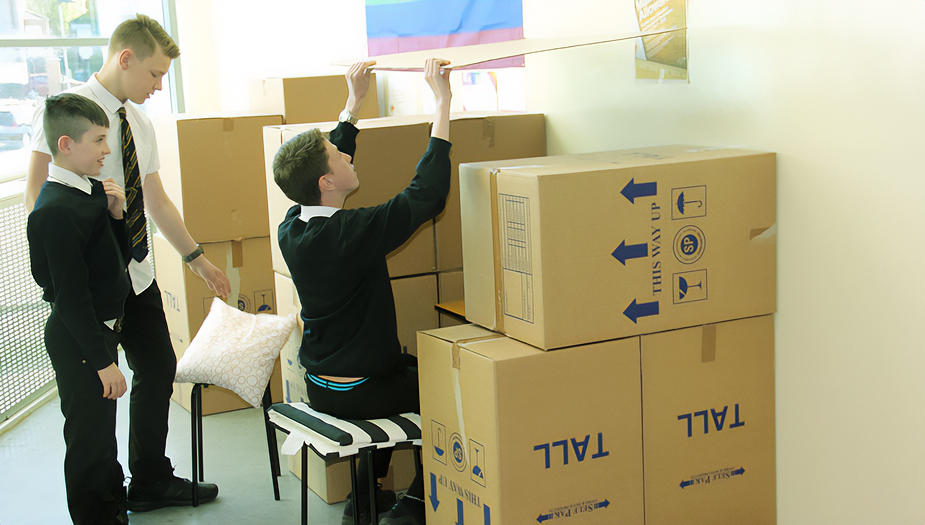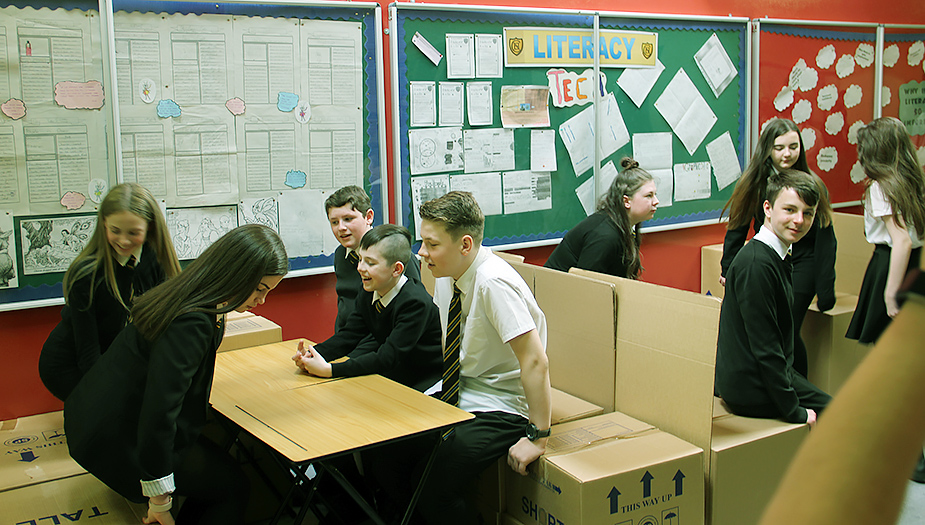Clydebank High School
How do learning spaces support voice and choice?

Tests of Change
The following case study uses the Plan-Do-Study-Act approach from the Test of Change projects.
Tests of Change (ToC) is based on an action enquiry cycle – Plan, Do, Study, Act (PDSA). This 4-step process encourages learners and educators to be at the forefront of problem-solving and decision-making to drive change in their own learning environments.
Teachers and pupils work together to explore how transforming learning as identified through ToC goals and using design-principles tools can lead to enhancing the quality of learning in our schools.
Plan
Clydebank High School is a public-private partnership (PPP) school with about 150 staff who support 1,200 learners and their families.
The school improvement plan identifies health and wellbeing as a priority. This can be met by ensuring more choice for learners and that their voices are heard.
The focus of this project was to support a learner-led approach to re-imagine spaces to better support socialisation. It was also to test what was possible in the space.
Do
Teachers were looking at ways to make better use of learning spaces to meet individual learner needs.
A group of teachers and learners from first year to sixth year engaged in a visionary workshop to develop a strategy for change. Prioritising learner voice, they focussed on:
- break out spaces for individual or group work.
- use of social spaces and circulation spaces for social learning. Circulation refers to the movement of people around buildings.
- flexible learning space, adaptable for subjects and learning styles.
Working with teachers, the learners identified and agreed the spaces to prototype and test new models of learning.
They gathered evidence around circulation, materials, health and safety and adaptability. The learners used cardboard, cushions and rugs to create 1:1 scale models.

Study
Through the space hack learners tested and evaluated seven different formats. This helped them to create evidence to inform decisions on future investment in the school.
The spaces they tested included:
- quiet study booths and standing desks
- collaboration tables
- presentation space and drama stage
- break-time space that supported socialisation
Learners were very much at the centre of the Tests of Change process, enabling them to take on leadership roles and be more creative.
With learners leading the design, teachers noted they were more engaged, and their needs were being met. This led to more productivity and innovation within the school.
Each test identified and emphasised the main priority to extend the choice of spaces. This was built on the premise that learners would gain a sense of wellbeing by experiencing different spaces conducive to their needs.

Act
Testing the prototypes in the spaces showed what was possible. It provided immediate feedback to learners on their ideas, as well as evidence for decision makers.
The Tests of Change experience gave learners an opportunity to be at the heart of decision making – they were integral to the planning and execution process.
Teachers were able to further embed a 21st century learning and teaching model into their practice. It’s a model that recognises that each young person has their own individual needs.
The Tests of Change process enabled teachers and learners to identify how those needs might be met. The teachers found the process purposeful, hands-on and experiential.
Experiences and Outcomes achieved through the Tests of Change process

Leadership of learning, children and young people leading learning
HGIOS 1.2

‘It gave us an opportunity for a bit more purposeful pupil leadership in terms of pupil voice... it was more active, it was more hands-on experiential based’

Management of resources and environment for learning
TCH2-09a/TCH3-09a/TCH2-11A/TCH3- 11a, HGIOS 1.5

‘When I was asking them to jot down their ideas, we got a range of responses, some of them were handwritten, some of them were 3D CAD models, the pupils followed up and wanted to know what was happening next, they were really enthusiastic about the project’
“If you get the opportunity to engage in the Tests of Change process, take it… because having the learners driving what they think the learning environment could look like... I felt so proud of the young people… you see them taking on that leadership opportunity, you see the critical thinking skills and creativity skills coming to fruition and really for me, it’s about that kind of ownership and I think that is phenomenal.”
How can the room we work in make a lesson better or more inspiring?
The spaces we work and learn in play a huge part in shaping our mental health, happiness, and ability to learn. Our Shared Learning toolkit will help guide you and your pupils step-by-step on a collaborative mission to find the answers.
